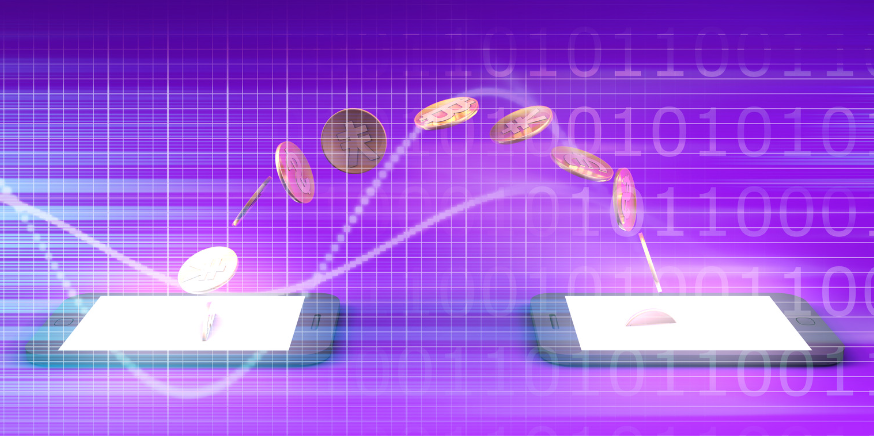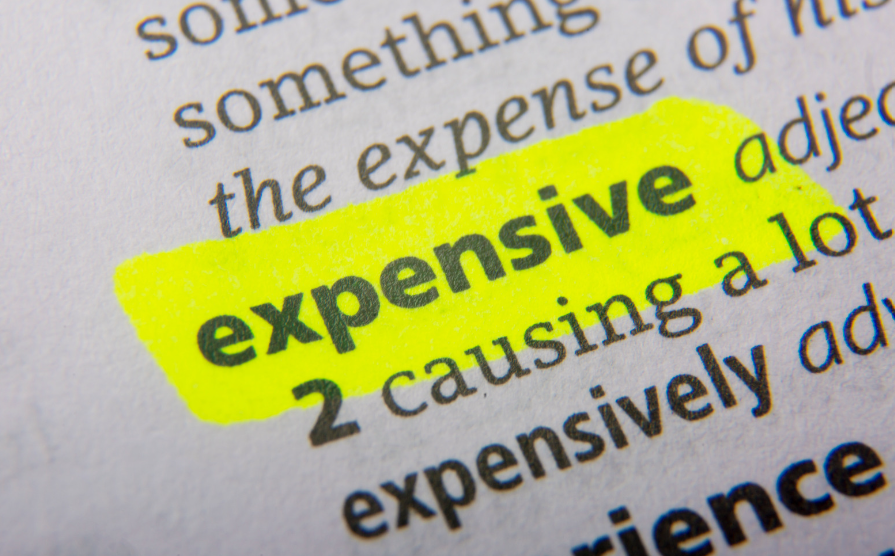One of the major difficulties facing today’s businesses is late payments from clients. Those late payments can, and often do, create financial issues for the companies. While figures vary, it’s commonly assumed that at least 30 percent of U.S. companies will expect to suffer financial issues due to late payments from clients. So, what can company owners do to reduce the likelihood of late payments?
Today, business owners are exploring a variety of options to speed up the payment process. When payments for goods or services are made promptly, the business is better able to respond to new business needs, pay their suppliers in a timely fashion, and even provide bonuses for employees. Of course, every business has fixed costs that must be paid, and late payments increase the odds of missing payments or being charged late fees. Those charges cut into profits and make it difficult for business owners to take advantage of new opportunities.
In many instances, business owners are exploring real-time payments as an option to speed up their payment cycles. These systems avoid much of the lag or “float” that’s been commonly experienced for years. Traditional payments are submitted, but the processing times make it impossible for businesses to access the money quickly. In some cases, the delays go on for days. That’s no longer acceptable, and real-time or ePayments are currently the best option if business owners are to see client payments in their accounts quickly.
What Are ePayments and Why Are They Important?

When people think of ePayments, they tend to lump all types of digital payments together. For example, they view credit card payments as real-time payments, but that’s far from the case. In the U.S., it still takes roughly 48 hours for a payment using a credit card to clear and the funds to become available. That same time frame is commonly experienced by businesses accepting other, older forms of payments. Today’s business owners want to receive payments faster.
If ePayment options are utilized, business owners see reduced time lags, which provides a variety of advantages for users. Payment experts predict that nearly 80 percent of business owners expect to see wide adoption of ePayment options in the near future, as those options become more readily available and inexpensive to use.
In order to expand the use of ePayments, business owners will be faced with a few issues. Arguably the most critical one is obtaining the equipment required to use the systems. However, while larger organizations may require significant IT investments, smaller businesses may be able to use tailored services from providers specializing in accelerating the payment process.
Once a system is in place, it’s simple to invoice customers from a variety of devices and collect payments quickly. It’s also easier to track down customers who need to make payments and allows those clients to use a variety of payment options, including various cards and eChecks. Some service providers also include ways to make bookkeeping easier by integrating third-party systems and QuickBooks. The best way to determine how to take advantage of various options is to contact a payment system provider for more information.
What Do Experts Say About the Future of ePayments?
The way people make payments is rapidly evolving. The use of cash and checks has declined significantly in recent years as businesses and individuals realize digital payments are far more convenient for everyone. In some places, the use of cash has all but disappeared as digital payments increased.
What spurred the rapid switch to digital payment options? For years, it’s been obvious cash, checks, and traditional charge cards are on the way out. Newer digital payment options are faster, often more secure, and easier for everyone involved to use. While those are important advantages, the past few years and Covid-19 pushed companies and individuals to use ePayment options.
Shopping from home exploded during the pandemic as shoppers moved from visiting retail stores to online options. At the same time, restaurants and service businesses took extra precautions to keep employees and customers safe. To accomplish that goal. Touchless payment options became the norm rather than the exception, which means an increasing number of people quickly adapted to using ePayment options rather than cash or checks.
Because companies everywhere are accepting ePayments, they’ve become routine, and their use is expected to increase substantially in the coming months and years. Industry experts predict that ePayment use will result in a dramatic decline in the use of traditional credit and debit cards. Globally, nearly 80 percent of banks predict real-time payment options will become far more common in the very near future.
That doesn’t mean cash, checks, and traditional credit cards will disappear in the immediate future. There are simply too many people who are not yet financially able to take advantage of ePayment options. For the time being, the various options will exist side by side, but expect to see more businesses and their clients using real-time payment options as time goes by.
What Are the Advantages of ePayments for Businesses?

Obviously, the biggest single advantage will be enjoying faster access to cash, as mentioned earlier. However, businesses of all sizes will be able to take advantage of lower overall costs as the service matures. Anytime a new system saves money, businesses should take note, as a competitive market makes it absolutely crucial for business owners to take advantage of any strategy that enhances their bottom line.
Using an ePayment system makes it simpler for customers to pay their bills, as there is generally a “Pay Now” button they can use. If you’re concerned about offending a customer by sending late notices, these systems reduce the odds of that happening.
Remember that even though using ePayment systems involve some fees, those fees are likely to be lower, in the long run, than the charges and associated expenses routinely experienced when credit and debit cards are used. In addition, being able to pay suppliers and other invoices faster may make it possible to negotiate discounts.
Industry experts suggest that E-invoicing is helpful even when dealing with slow-paying customers, as it’s easy to track payments and send reminders quickly when a payment isn’t forthcoming. At the same time, manual processing errors are virtually eliminated when automated invoicing is used.
Another advantage to consider is the reduced chance of fraud, as the systems are expected to be more secure than some cards and will certainly have a lower risk than accepting checks. Digital payment systems make it easier to spot fraud, which means ongoing schemes can be caught immediately to avoid extensive losses.
It’s also important to consider ePayment options when dealing with overseas companies. In the past, payment delays from overseas clients could be lengthy, which made it difficult for some companies to pay their own invoices and recurring bills. Real-time payments reduce delays and, again, reduce the odds of fraud during processing.
Obviously, the biggest single advantage will be enjoying faster access to cash, as mentioned earlier. However, businesses of all sizes will be able to take advantage of lower overall costs as the service matures. Anytime a new system saves money, businesses should take note, as a competitive market makes it absolutely crucial for business owners to take advantage of any strategy that enhances their bottom line.
Using an ePayment system makes it simpler for customers to pay their bills, as there is generally a “Pay Now” button they can use. If you’re concerned about offending a customer by sending late notices, these systems reduce the odds of that happening.
Remember that even though using ePayment systems involve some fees, those fees are likely to be lower, in the long run, than the charges and associated expenses routinely experienced when credit and debit cards are used. In addition, being able to pay suppliers and other invoices faster may make it possible to negotiate discounts.
Industry experts suggest that E-invoicing is helpful even when dealing with slow-paying customers, as it’s easy to track payments and send reminders quickly when a payment isn’t forthcoming. At the same time, manual processing errors are virtually eliminated when automated invoicing is used.
Another advantage to consider is the reduced chance of fraud, as the systems are expected to be more secure than some cards and will certainly have a lower risk than accepting checks. Digital payment systems make it easier to spot fraud, which means ongoing schemes can be caught early enough to avoid extensive losses.
It’s also important to consider ePayment options when dealing with overseas companies. In the past, payment delays from overseas clients could be lengthy, which made it difficult for some companies to pay their own invoices and recurring bills. Real-time payments reduce delays and, again, reduce the odds of fraud during processing.

Don’t Forget About the Downside
For the time being, processing ePayments may actually be slightly more expensive for everyone as banks will experience higher processing costs when same-day payment options are used. Those banks will also lose the float advantage they’ve enjoyed for years. Judging from past experience, it’s likely the banks will try to pass on their additional costs to users, but those fees may be reduced as competition increases and initial investments are recovered. It’s hard to tell, at this point, how all the fees will wash out in the future, but business owners are also likely to pass on any temporarily increased fees to their customers.
It’s also going to take time for banks to bring their systems online. That means when more than one bank is involved in processing a payment, delays can still be expected. Of course, even smaller banks will soon feel the pressure to update their systems as more users adopt ePayments.
Moving to the Future
If you’re concerned about any potential downside to using real-time ePayment systems, it’s a good idea to work with a service provider who has the experience necessary to avoid any pitfalls when adopting a new payment option.
Companies exploring new and innovative ways to get paid faster are encouraged to contact an expert for advice before making any major decisions. Since ePayment options are still relatively new, expect to see systems evolve as the technology involved improves.
Remember that the primary advantages of ePayment systems include creating and delivering customer invoices quickly and accurately, allowing customers to review and pay those invoices from any smart device, and faster fund transfers to your account. Those advantages alone are well worth the move to an ePayment system.
It’s also important to remember that these systems are designed to meet a variety of company invoicing and payment processing requirements. Top service providers provide company owners private coaching to ensure everyone involved understands the capabilities of their new ePayment system. For an introduction to a customizable payment processing experience, contact a service provider for more information now.

